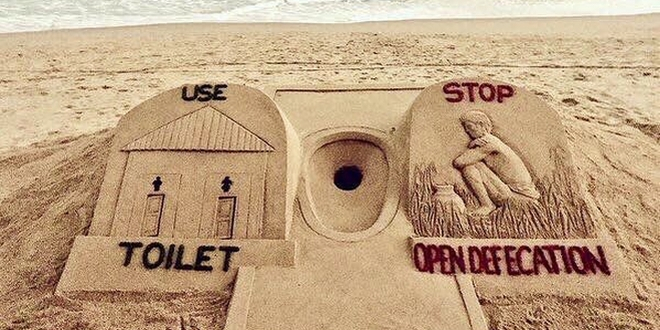
In News
A recent survey shows that urban India is 99% open defecation free.
In-Detail
- The latest survey shows, 99% of the Indian cities under urban bodies have become open defecation free (ODF).
- Due to the pandemic, the survey of the urban bodies could not be done in West Bengal.
- India’s urban areas are officially becoming open defecation free.
- The West Bengal government’s performance is exemplary in the Swachh Bharat Mission.
- In solid waste management, the West Bengal ensured 90% door to door collection and the rate of segregation is increasing rapidly.
- Quality Council of India is visiting ULBs as third parties and declared more than 20 ULBs as ODF and 75 ULBs have been self-declared ODFs.
- From a position of zero ODF states and cities in 2014, 99% have today become ODF.
- After completing the assessments in 45 cities of West Bengal, it will become 100%.
- The data shows that of the 4372 cities in India to be made ODF, 4,323 stands declared as ODF which is 99% and 4204 stand as ODF verified cities.
- Open defecation has been a problem in rural areas of India.
- India has claimed that 5,999,963 villages of the country have attained ODF status by the construction of the required toilets under Swachh Bharat Rural Mission.
- The government has spent more than Rs 11 lakh crore in the urban space in the six years.
- This is a quantum jump from Rs 1.55 lakh crore in the urban areas spent in 10 years.
- The Centre’s data shows solid waste management processing has gone up to 67% from 1% in 2014.
- The target is to reach 100% by the time India celebrates 75 years of Independence in 2022 in the 500 Indian cities under the Atal Mission for Rejuvenation and Urban Transformation Scheme (AMRUT).
Swachh Bharat Mission
- Launched in the year 2014, Swachh Bharat Mission (SBM) is Central Government’s flagship scheme aimed at making India open defecation free.
- The Mission also has solid waste management as one of its main components.
- The Mission is divided into two components as Swachh Bharat Mission (Urban) and Swachh Bharat Mission (Rural).
- While SBM-Urban is being overseen by the Ministry of Housing and Urban Affairs, the Ministry of Drinking Water and Sanitation is overseeing the SBM-Rural.
- The Mission is being implemented in two phases.
- Under phase I, which lasted till October 2019, the target of the mission was to eradicate manual scavenging, generate awareness about good sanitation practices and augmenting sanitation capacity at the local level.
- By constructing toilets at household levels, the scheme aims to eradicate open defection. Also, construction of community toilets and public toilets are part of the scheme.
- To make states and cities to compete and maintain their cleanliness status, a ranking exercise called Swachh Survekshan has also been launched under the SBM-Urban Mission.
AMRUT
- AMRUT ( Atal Mission for Rejuvenation and Urban Transformation) was launched in the year 2015.
- The programme is aimed at providing robust sewage networks, tapped drinking water, urban transportation and other amenities in an urban area.
- The projects under the scheme are carried out in Public-Private-Partnership (PPP) model.
- As per the official website of the AMRUT
Mission, the purpose of the mission is to
- Ensure
tapped water and sewage connection to every household
- Develop greenery and well-maintained parks to increase amenity value of cities
- Reduce pollution by making public transport available and developing non-motorised commuting infrastructure such as walking and cycling tracks
- Ensure
tapped water and sewage connection to every household

Leave a Reply
You must be logged in to post a comment.